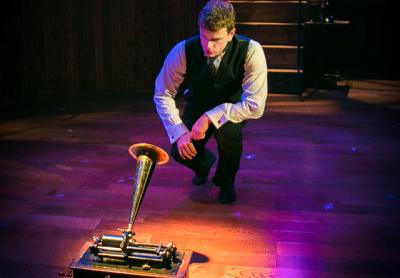‘My Fair Lady’ Has It, Mostly, All

I think it’s fair to say that “My Fair Lady” is one of the great examples of the American musical’s golden era (that period from the mid-1950s through the ’60s). This 1956 work has just about everything — humor, romance, and some trenchant social satire, including a feminist motif that must have seemed daring for the ’50s. And it was composed by no less than the classic writing team of Alan Jay Lerner and Frederick Loewe.
The question for a 21st-century audience, however, is just how dated this 60-year-old material will seem. Is it possible that “My Fair Lady” (running now through Aug. 28 at Sag Harbor’s Bay Street Theater) still has resonance for a modern audience?
The answer is mostly yes. This revival gets off to a rough start, though it is no fault of the performers: This is a highly enjoyable and wonderfully acted production. Instead, the fault lies in Mr. Lerner’s antiquated book. As the story opens, you might remember, a young woman named Eliza Doolittle is selling flowers on the streets of 1912 London when she spots a man copying her speech into a notebook. The man turns out to be Henry Higgins, a professor of phonetics who makes fun of her coarse use of language, thus launching the first of the show’s many memorable musical numbers, “Why Can’t the English Learn to Speak?”
It is a charming and clever song, and if Higgins’s rough treatment of Eliza ended here, it would all be in good fun. But when the professor tries to give Eliza speaking lessons to teach her how to be a “lady,” the insults increase in harshness — “Cabbage!” “Guttersnipe!” “Imbecile!” — until he is actually threatening her with physical violence; he’d like to smash her in the head with a broom, for example. Even as you remind yourself that you are watching a musical from 60 years ago, it’s hard not to be distracted by the ugliness of Higgins’s attacks. Sure, you recognize that the point is to portray the professor as a misogynist, but his cruelty is written at such a high pitch that it is jarring to a modern audience, or at least it was to me. At one point, Eliza flinches as he comes near her, stating that she expected him to hit her.
Most of this nastiness ends at about the 20-minute mark, at which point the production hits its stride and you can concentrate on the ensemble’s terrific performances. You know this narrative, of course, even if you’ve only seen “Pretty Woman.” It’s the mythical Pygmalion story of metamorphosis, and Kelli Barrett, who plays Eliza, is nothing short of smashing; her transformation from cockney flower girl to elegant English rose really couldn’t be much better. Ms. Barrett is not only a terrific actress who handles humor and drama in equal measure, she is also a fabulous singer who nails every musical number, especially, “I Could Have Danced All Night.”
Paul Alexander Nolan has a tougher job as the pretentious, imperious Higgins, and it is a credit to him that he does not shy away from the professor’s meanspiritedness. In fact, as an actor he rather seems to relish it. By the end, Mr. Nolan dances and sings his way through his role with such a deft touch that you almost feel sorry for him when he sets about the musical’s closing number, “I’ve Grown Accustomed to Her Face.” Did I say almost?
And one would be remiss not to mention John O’Creagh’s performance as Eliza’s father, Alfred. Mr. O’Creagh inhabits this drunken dustbin worker with an infectious cheer, and though his singing doesn’t measure up to the two leads, there’s no one in the cast who looks like he’s having more fun. Mr. O’Creagh nearly steals the show with his rousing rendition of “Get Me to the Church On Time.”
It’s not easy to get this broad-canvased musical to work on a small stage, but the director, Michael Arden, the choreographer, Chase Brock, and the set designer, Dane Laffey, find ways to utilize Mr. Laffey’s two-level, modern-looking set in ways that never seem claustrophobic.
In the end, of course, Higgins gets his comeuppance and Eliza finds her voice as a woman. But this is really a musical about the transparency of social class. Eliza’s transformation proves that “breeding” and “class” are utter myths and bear no relation to birthright or DNA. It’s about environment and simple cosmetics. Anybody can do it.
What most of us cannot do, though, is perform onstage with the joy and precision currently on display at the Bay Street Theater.
